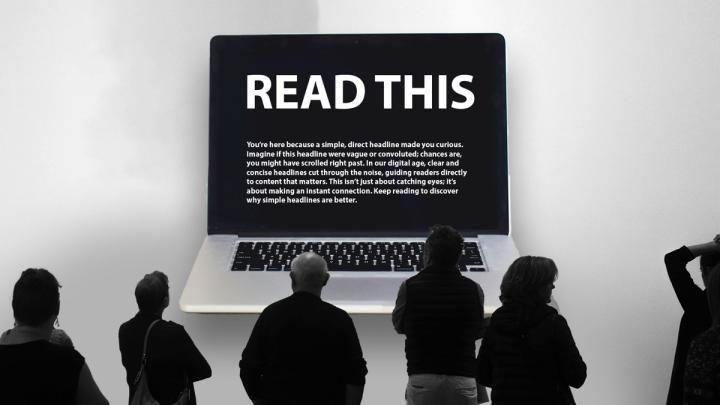A study released today has found empirical evidence behind an old rule for effective writing—the simpler, the better. Weatherhead professor of public policy Todd Rogers, with fellow researchers Hillary Shulman and David Markowitz, looked at how readers engage with headlines from the Washington Post and Upworthy, a storytelling website. Their analysis confirms that, in a gloomy time for journalism, news agencies eager for clicks—and by extension, subscriptions and advertiser dollars—will need to keep their headlines simple and easy to read.
In both lab-controlled experiments and real-world trials, headlines that used common words with fewer syllables attracted more reader engagement. More analytic and complex headlines got fewer clicks, and some readers didn’t even remember them just minutes after seeing them.
The study, published Wednesday in Science Advances, reminds journalists that, in a competitive online news environment where the next possible article is just a scroll away. “Readers are economical with their attention,” they write.
To appeal to them, editors must include simplicity as one of many factors that go into writing headlines, which must summarize often complicated articles in just a few words. Rogers, one of the authors, cautioned against trying to make headlines too precise. “When we’re trying to communicate to a busy audience, it’s great to have a neat vocabulary, but better to use simple words,” he said, quoting Mark Twain’s famous advice: “Don’t use a five-dollar word when a fifty-cent word will do.”
Rogers pointed out that many aspects in the education system, from standardized testing to the culture of academia, push students to use more advanced vocabulary in their writing. But that doesn’t fit the news environment, where the impulse for precision has to be checked with the question, “How do readers read?” Rogers said.
The project also found a gap—what it labeled a potentially “consequential blind spot”—between journalists and their readers. In one of the component studies, journalists were found to be an exception to the “simpler-is-better” hypothesis for holding attention. They showed no difference in engagement between simple and complex headlines, and remembered both equally well, “suggesting a disconnect between what journalists think audiences will read and what they actually do,” according to the paper.
Though the differences in reader engagement between simple and complex headlines were small, for outlets with millions of daily readers, even minor changes in the number of clicks can translate into hundreds of thousands more people reading an article.
In order to analyze headline engagement, the researchers were connected to top editors at the Washington Post who gave them access to nearly 20,000 stories—and an internal system they had already set up to measure headline success. According to Rogers, the Post’s system would initially run two different headlines for stories published online and measure which one performed better. The candidates could be similar or have almost no overlap, and whichever was more successful then became the final headline for the article.
The selection strategy represents a response to news outlets’ “increasingly digital DNA,” Rogers pointed out. During the last decade, legacy publications have overwhelmingly shifted to a “digital-first” format. The shift has forced outlets to compete in the fierce online struggle for users’ attention, but also provided more flexibility in experimenting with innovative media, design, and other engagement strategies like the Post’s.
From Upworthy, the platform that shares positive news stories, the researchers obtained even more headlines—more than 100,000. They examined the clicks per impression: among those on whose screens it appeared, how many people clicked to read further.
Just last year, Rogers published a book, Writing for Busy Readers with Harvard colleague Jessica Lasky-Fink, research director of the People Lab at the Bloomberg Center for Cities, drawing on behavioral science to promote effective writing strategies in the digital age.
As inquiry into human behavior and writing practices progresses, there’s more room to explore the specific qualities Rogers, Shulman, and Markowitz used as proxies for simplicity in the study. For example, the debate about when to consider a word “common”—and when to include explanatory words around it—continues to be blurry for journalists and editors. After the January 6 , 2021, insurrection at the U.S. Capitol, many news outlets may have felt the word “insurrection” warranted definition to better orient readers, Rogers pointed out. But three years later, it may have “graduated” to a word that outlets can expect their readers to know. Similar questions surround when and how to identify public figures—deciding whether to include someone’s title, or just their name in a headline, is not an exact science either.
With the results of the study, however, Rogers said journalists now have at least one more aid for crafting their headlines. “When all else is equal, and you are on the fence,” he said, “simpler language is better.”








